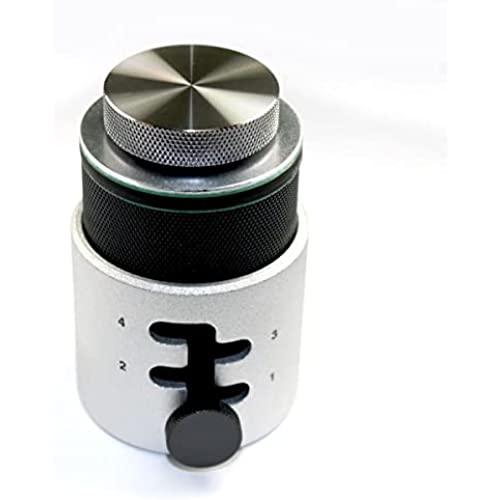

Hakko Omnivise PCB Holder (C1390C)
-

Big dumb goof
> 3 day...and here all this time I was thinking this thing was not a necessity.
-

NEIL A VAN NOTE
> 3 dayGreat little vise. Built like a tank; definitely worth the price.
-

Cavallo
> 3 daySuper dense for its size - Extremely bottom heavy. Definitely trust it to hold longer boards, and may buy another once I finish reeling from how expensive the first was.
-

A handy guy
> 3 dayIve used all of the various PCBA holders. Time after time I reach for one (or more) of these handy PCB holders. They are heavy, and dont move around much. Most of the time small projects can be supported off the work surface by just one. Two or three of them result in the creation of an immovable object on your bench. Simple, efficient. They cost too much.
-

Jonathan
> 3 dayI dont know what took me so long to get one of these mounts. I have some of the other styles, but I kept seeing this thing being used in YouTube videos that I subscribe to. Now that I finally have one for myself, its amazing. If you do any kind of soldering, its a must have.
-

Graham Shepherd
> 3 dayhardly used, fount the board holder was better
-

MPech
> 3 dayI have used this vise at work for over 12 years. I decided to get one for home recently. Unfortunately, they cheapened the design such that it is no longer a vise, but pliers. For me the critical thing was that both clamping plates are parallel to each other no matter the the thickness of the material being clamped. The old design had a nut on the main bolt which held the top plate with the rubbery material in place. Even though it was loose, but not too much. The new design removed the nut and replaced it with just a small E-clip retaining washer. There is about 5 mm play in between the washer and the top plate. The top plate is so loose, that you get a wide swinging of the top plate. If you want to clamp material even as 10 mm think this really become pliers, one edge of the top round plate sitting on the edge of the bottom cylinder while the other edge of the top plate is clamping your material at an angle, like pliers. Since I liked the style, I decided to modify it to actually create a vise. Here are the steps: 1. I replaced the top washer in between the top plate and knob with one with much bigger diameter. I used SAE washers and enlarged the center holes to make them snug 8 mm in diameter. 2. Placed two washers at the bottom of the top plate. Second one is not visible in the picture since it fills the hole in the rubberized material. The other one is there to fill the space to reach the M8 x 1.25 thread since the thread ends early to accommodate the E-clip. The second washer must be made less than 15 mm in outer diameter to drop into the hole in the bottom cylinder. 3. That was not enough to reach the bottom nut, but instead of adding another washer I backed drilled the M8 nylon locking M8 nut for about 0.8 mm to make it all work. The M8 x 1.25 nylon locking nut replaced the E-clip and I was able to fine tune the play of the top plate. After lubricating the whole thing with PTFE there is no side wobble play in the upper plate while it still freely rotates and I have an actual vise. It took about 1.5 hours to modify two of them. Not worth the price without modification.
